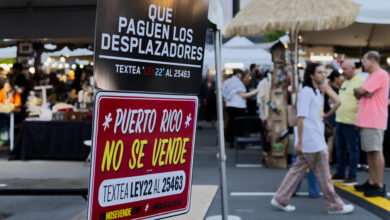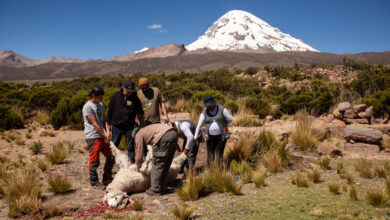Colombia and Paraguay: Protecting their plants
Species such as the wax palm tree and the Victoria Amazonica are threatened

Paraguayan Case
On the coast of the Paraguay River, close to the Piquete Cué region, a patch of Victoria Amazonica floats on the water’s surface. The beauty of the vivid landscape attracts thousands of tourists looking to experience nature. However, although mass tourism brings money to the fishermen in the region, it also provokes the destruction of the environment.
At the beginning of January, a group of tourists disturbed the ecosystem by taking plants from the water -whose leaves reach 3 meters in diameter-. Not bothered by the spines that surround the leaves, some of the visitors apparently retired the plants to prepare medicines to relieve bronchial problems.
When the Environment Ministry (SEAM) was informed, it decided to ban the taking of plants from the area and warned visitors of penalty fines of more than 20 thousand dollars.
Additionally, the SEAM announced on its official website that “any extraction from the environment is considered illegal if it doesn’t have the authorization which allows for the controlled exploitation of environmental resources”.
Yakare Yrupe, as this plant is also known in the region, is considered a national treasure in Paraguay because of its beauty. Nonetheless, despite conservation mechanisms, the species is in danger of extinction, according to the environmental law.
Ramón Chilavert Torres, an expert at the Environment Ministry in Paraguay, does not agree with an economic punishment. He explains, “we have to work harder on education to reach our goals. The purpose is to educate tourists who value nature”. At the end, it is more important to create awareness about the value of nature, than to pay for damaging it.
Chilavert asserts that another way to face the problem is to develop ecotourism as the key to prevent damage to the environment. “I guess that 80% to 90% of the attraction to tourists depends on the environment, so I think that these tourist packages should include ecotourism programs with the goal of making visitors understand and value the place they are in, bringing some benefits to the communities in the area and having less negative impact on the environment”, says Chilavert.
Colombian case
However, people’s selfishness is not the only the cause of species endangerment. In Colombia, El Valle de Cocora (Quindio) affronts a complex situation. According to some scientists, the palm tree, also known as wax palm (Ceroxylon quindiuense spp), is dying because of deforestation, cattle grazing, and the indiscriminate use of its leaves year after year during the Catholic Feast Palm Sunday.
Edward Fonseca, Agroforestry Engineer, who works as Environmental Interpreter at the Botanical Garden in Bogota (Colombia), argues that the critical situation of the species is not the same as before. “Twenty years ago, people used to cut down the palm trees with two purposes: for Palm Sunday celebrations and candle manufacture. With those irresponsible habits they almost extinguished the palm. However, the species changed its international status and today is considered threatened but not in danger of extinction”, says Fonseca.
After the government authorities declared the palm as the national tree in 1985 and encouraged people to protect it, some prohibitions were interposed such as the cutting down and the sale of leaves.
Another action to control the situation was executed by the Botanical Garden and the Catholic Church. In fact, to encourage environmental consciousness, during the Palm Sunday, these organizations started to give living plants to the congregation in order to make people take care and keep them at home from feast to feast.
However, the current policies are not enough to protect the palm tree. After the discovery of Tochecito (the biggest wax palm tree jungle in Colombia) in 2017, a group of experts from the Environment Ministry proposed the implementation of a conservation plan aimed to declare the area a natural sanctuary. According to Rodrigo Bernal, botanist and specialist in palm trees, the plan has been in motion, but not as it was proposed by the scientists.
“We suggested that Tochecito should be declared a protected area. The plan is still on, but the Ministry and some corporations have implemented actions that ignore it. For example, there´s a Ministry’s program called The Wax Palm Rout; which does not follow the original recommendations of the plan and has received more than 827 thousand dollars. By now, the results had been questioned by environmental groups”, says Bernal.
At the present, both species, the Victoria Amazonica in Paraguay and the Wax Palm Tree in Colombia are trying to survive amidst the changes in policy, climate, and the environmental consciousness of the people. By now, starting a change to protect them is something that should come from the way we act so our actions have a positive effect in our future.
LatinAmerican Post | María Alejandra Gomez
Copy edited by Marcela Peñaloza





